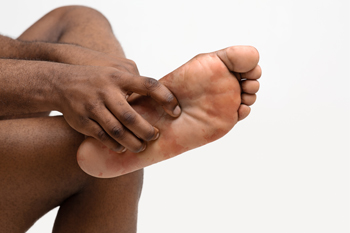

Skateboarding is a thrilling sport that demands agility, balance, and skill. However, it also comes with the risk of foot and ankle injuries that can sideline enthusiasts. These injuries range from minor sprains to more severe fractures, impacting both beginners and seasoned riders alike. Common injuries include ankle sprains, which occur when the ligaments supporting the ankle are stretched or torn due to sudden twists or falls. Fractures, particularly in the foot and ankle bones, can result from high-impact collisions or failed landings. Additionally, overuse injuries, such as tendonitis and stress fractures, can develop from repetitive strain on the feet and ankles. Proper protective gear, including sturdy shoes and ankle braces, can help lower the risk of injuries while skateboarding. Furthermore, mastering fundamental techniques and gradually progressing to more advanced maneuvers can reduce the likelihood of accidents. By understanding the potential risks and taking preventive measures, skateboarders can enjoy their passion while minimizing the chance of foot and ankle injuries. If you have endured a foot or ankle injury for any reason, it is suggested that you consult a podiatrist who can effectively treat these types of injuries.
Ankle and foot injuries are common among athletes and in many sports. They can be caused by several problems and may be potentially serious. If you are feeling pain or think you were injured in a sporting event or when exercising, consult with the podiatrists from The Foot & Ankle Center of New Jersey. Our doctors will assess your condition and provide you with quality foot and ankle treatment.
Common Injuries
The most common injuries that occur in sporting activities include:
Symptoms
Symptoms vary depending upon the injury and in some cases, there may be no symptoms at all. However, in most cases, some form of symptom is experienced. Pain, aching, burning, bruising, tenderness, tightness or stiffness, sensation loss, difficulty moving, and swelling are the most common symptoms.
Treatment
Just as symptoms vary depending upon the injury, so do treatment options. A common treatment method is known as the RICE method. This method involves rest, applying ice, compression and elevating the afflicted foot or ankle. If the injury appears to be more serious, surgery might be required, such as arthroscopic or reconstructive surgery. Lastly, rehabilitation or therapy might be needed to gain full functionality in the afflicted area. Any discomfort experienced by an athlete must be evaluated by a licensed, reputable medical professional.
If you have any questions, please feel free to contact our office located in Paramus, NJ . We offer the newest diagnostic and treatment technologies for all your foot care needs.

Strong ankles are important for maintaining balance, stability, and preventing injuries. Incorporating targeted foot exercises into your routine can help strengthen the muscles surrounding the ankles, improving their resilience and function. One effective exercise is ankle circles, where you sit or stand and gently rotate your ankle in circular motions, both clockwise and counterclockwise. Calf raises are another beneficial exercise, involving standing with your feet hip-width apart and lifting your heels off the ground, then lowering them back down. For an added challenge, try performing calf raises on an elevated surface to increase the range of motion. Additionally, resistance band exercises, such as ankle dorsiflexion and plantarflexion, help strengthen the muscles in the front and back of the ankle. Finally, balance exercises like single-leg stands or using a balance board can further enhance ankle stability. By incorporating these exercises into your regular workout routine, you can fortify your ankles, reduce the risk of injury, and improve overall lower body strength and stability. If you have pain from having weak ankles, it is suggested that you visit a podiatrist who can determine what type of ankle exercises are best for you.
Exercising your feet regularly with the proper foot wear is a great way to prevent injuries and build strength. If you have any concerns about your feet, contact the podiatrists from The Foot & Ankle Center of New Jersey. Our doctors can provide the care you need to keep you pain-free and on your feet.
Exercise for Your Feet
Exercise for your feet can help you gain strength, mobility and flexibility in your feet. They say that strengthening your feet can be just as rewarding as strengthening another part of the body. Your feet are very important, and we often forget about them in our daily tasks. But it is because of our feet that are we able to get going and do what we need to. For those of us fortunate enough to not have any foot problems, it is an important gesture to take care of them to ensure good health in the long run.
Some foot health exercises can include ankle pumps, tip-toeing, toe rises, lifting off the floor doing reps and sets, and flexing the toes. It is best to speak with Our doctors to determine an appropriate regimen for your needs. Everyone’s needs and bodies are different, and the activities required to maintain strength in the feet vary from individual to individual.
Once you get into a routine of doing regular exercise, you may notice a difference in your feet and how strong they may become.
If you have any questions please feel free to contact our office located in Paramus, NJ . We offer the newest diagnostic and treatment technologies for all your foot and ankle needs.

Erythromelalgia, a rare disorder that primarily affects the feet, casts a shadow over the lives of those afflicted. It is thought to occur as a result of the dysfunction of certain blood vessels that may lead to abnormal blood flow affecting the feet. In this condition, the feet endure excruciating pain and inflammation, often described as burning, stabbing, or throbbing sensations. Despite its rarity, erythromelalgia's effects are profound, disrupting daily routines and causing immense discomfort. Affected individuals may find solace only in cooling measures, as warmth exacerbates symptoms. The distinctive symptom of this disorder lies in the visible manifestation on the feet, which is a striking redness and warmth, similar to a fiery glow, that distinguishes it from other ailments. Walking, standing, or even wearing shoes become arduous tasks, imposing significant limitations on mobility and quality of life. Understanding the nuances of erythromelalgia is imperative, shedding light on its silent but profound impact on the feet and the lives it touches. If you or someone you know is affected by this rare foot disease, it is strongly suggested that you are under the care of a podiatrist who can help you manage this painful condition.
Some foot conditions may require additional professional care. If you have any concerns, contact the podiatrists of The Foot & Ankle Center of New Jersey. Our doctors can provide the care you need to keep you pain-free and on your feet.
Rare Foot Conditions
The majority of foot conditions are common and can be treated by a podiatrist. Standard diagnostic procedures are generally used to identify specific conditions and treatment can be rendered. A podiatrist also treats rare foot conditions which can be difficult to diagnose and may need extra attention and care.
There are many rare foot conditions that can affect children. Some of these can include:
Freiberg’s disease - This can be seen as a deterioration and flattening of a metatarsal bone that exists in the ball of the foot. It typically affects pre-teen and teenage girls, but can affect anyone at any age. Symptoms that can accompany this can be swelling, stiffness, and the patient may limp.
Kohler’s disease - This often targets the bone in the arch of the foot and affects younger boys. It can lead to an interruption of the blood supply which ultimately can lead to bone deterioration. The patient may limp or experience tenderness, swelling, and redness.
Maffucci syndrome - This affects the long bones in a child’s foot leading to the development of abnormal bone lesions. They are benign growths and typically develop in early childhood and the bones may be susceptible to breaking.
A podiatrist can properly diagnose and treat all types of rare foot conditions. If your child is affected by any of these symptoms or conditions, please don’t hesitate to call our office so the correct treatment method can begin.
If you have any questions please feel free to contact our office located in Paramus, NJ . We offer the newest diagnostic tools and technology to treat your foot and ankle needs.